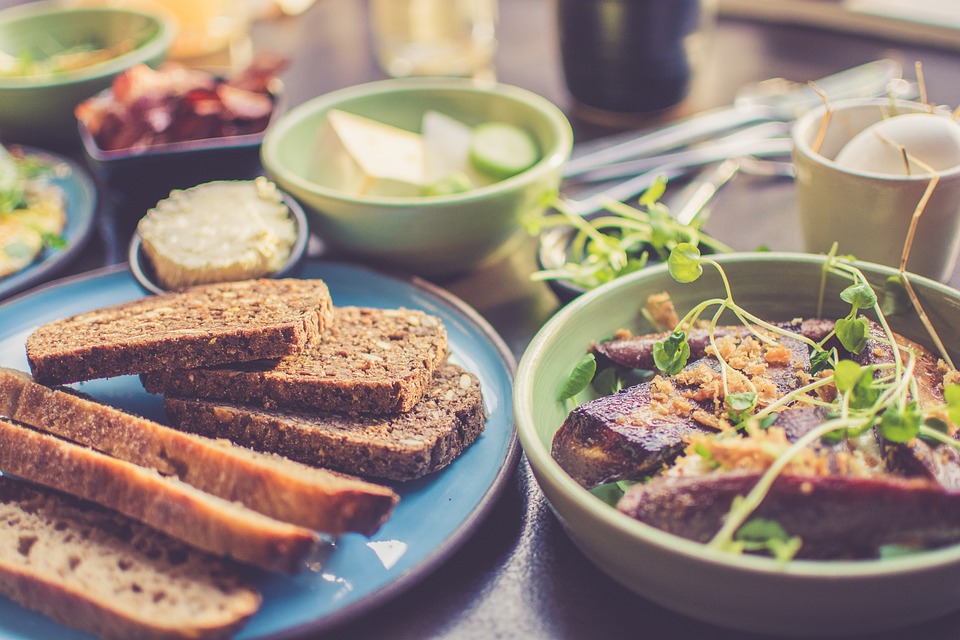gastric sleeve Stage 3 Diet: Nourishing Your Body After Surgery
Introduction
After undergoing gastric sleeve surgery, it is crucial to adapt to a new diet and lifestyle to ensure successful weight loss and maintain your health. the third stage of the post-surgery diet plan, known as the Gastric Sleeve Stage 3 Diet, focuses on gradually reintroducing solid foods while still prioritizing healthy choices. In this article, we will guide you through the Gastric Sleeve Stage 3 Diet, offering valuable tips and insights to help you navigate this important phase of your weight loss journey.
The Importance of the Gastric Sleeve Stage 3 Diet
The Gastric Sleeve Stage 3 Diet plays a vital role in your recovery, as it allows your stomach to heal and adjust to the changes from the surgery. This stage typically begins about four to six weeks after the procedure, depending on your surgeon’s recommendations. During this phase, your body gradually transitions from a liquid and pureed diet to solid foods, promoting long-term dietary habits that ensure sustained weight loss and overall well-being.
1. Introducing Solid Foods
As you progress into the Gastric Sleeve Stage 3 Diet, you will start incorporating solid foods into your meals. It is important to remember that these foods should still be soft and easily chewable to prevent any discomfort or complications. Opt for lean protein sources such as chicken, fish, tofu, or legumes, as they provide essential nutrients while keeping you satiated. Additionally, include a variety of non-starchy vegetables, like broccoli, cauliflower, and spinach, to enhance your meals with fiber, vitamins, and minerals.
2. Portion Control and Frequency
During the Gastric Sleeve Stage 3 Diet, it is crucial to practice portion control and mindful eating. Your stomach’s reduced size after surgery means that you will get full more quickly than before. Aim for three balanced meals a day, with each plate consisting of approximately half protein, a quarter of non-starchy vegetables, and a quarter of whole grains or other complex carbohydrates. Dividing your plate in this way ensures a well-rounded, nutrient-dense meal that will help you maintain energy levels throughout the day.
3. Hydration and Fluid Intake
Staying hydrated is essential for your overall health, especially after gastric sleeve surgery. While it is important to avoid drinking liquids with meals, as they can fill up your stomach and hinder proper digestion, make sure to prioritize hydration between meals. Sip water throughout the day and aim for at least 64 ounces (1.9 liters) of fluids daily. However, be mindful of sugary drinks and carbonated beverages, as they can contribute to weight regain and discomfort. Opt for water, herbal tea, or infused water for a refreshing and calorie-free hydration option.
4. Balancing Macronutrients
To maintain a healthy and balanced diet during the Gastric Sleeve Stage 3 Diet, it is crucial to focus on the right balance of macronutrients – proteins, carbohydrates, and fats. Proteins play a crucial role in muscle repair and satiety, while carbohydrates provide energy and fiber. Incorporate healthy fats, such as avocados, nuts, and olive oil, into your meals to promote satiety and support brain function. Prioritize whole, unprocessed foods whenever possible, as they provide a more nutrient-dense option compared to processed alternatives.
5. Mindful Eating and Long-Term Habits
The Gastric Sleeve Stage 3 Diet is not just about what you eat, but also how you eat. Mindful eating practices can greatly contribute to your long-term success and overall well-being. Take the time to savor each bite, chew slowly, and listen to your body’s hunger and fullness cues. Avoid distractions while eating, such as watching television or scrolling through your phone, as they can lead to mindless overeating. Developing mindful eating habits during this stage will set a solid foundation for a healthy relationship with food that will benefit you in the long run.
conclusion
The Gastric Sleeve Stage 3 Diet is a crucial phase in your weight loss journey after undergoing gastric sleeve surgery. By gradually reintroducing solid foods, practicing portion control, prioritizing hydration, balancing macronutrients, and cultivating mindful eating habits, you can ensure the long-term success of your weight loss goals and maintain a healthy lifestyle. Remember to consult with your healthcare provider or a registered dietitian to personalize your diet plan and address any specific concerns you may have. Embrace this stage as an opportunity to nourish your body and enjoy a nutritious, satisfying diet that supports your overall well-being.
Top Inquiries Regarding Gastric Sleeve Stage 3 Diet
1. What is the Gastric Sleeve Stage 3 Diet and when should I start it?
The Gastric Sleeve Stage 3 Diet is the third phase of the post-surgery dietary plan for individuals who have undergone gastric sleeve surgery. This stage typically begins around four to six weeks after the surgery, once your surgeon gives you the green light to progress from the previous stages.
Important information:
1. The Gastric Sleeve Stage 3 Diet focuses on introducing more solid foods into your diet.
2. It is essential to follow your surgeon’s instructions and guidelines for transitioning to this stage.
3. Starting the Stage 3 Diet too early can cause complications, while delaying it can slow down your recovery progress.
2. What foods can I eat during the Gastric Sleeve Stage 3 Diet?
During the Gastric Sleeve Stage 3 Diet, you can introduce a wider variety of solid foods into your meals. However, it is crucial to prioritize nutrient-dense and easily digestible options.
Important information:
1. Focus on consuming lean proteins such as chicken, fish, turkey, and tofu.
2. Include a variety of vegetables and fruits to ensure you’re getting essential vitamins and minerals.
3. Avoid high-calorie and high-sugar foods, as they can hinder weight loss and may cause discomfort.
3. How should I prepare my meals during the Gastric Sleeve Stage 3 Diet?
Proper meal preparation is key during the Gastric Sleeve Stage 3 Diet to ensure you meet your nutritional needs and maintain a healthy weight loss.
Important information:
1. Cook foods using healthy methods such as grilling, baking, steaming, or sautéing with minimal oil.
2. Pay attention to portion sizes to avoid overeating and to prevent discomfort.
3. Chew your food thoroughly and eat slowly to aid digestion and prevent complications.
4. Are there any foods I should avoid during the Gastric Sleeve Stage 3 Diet?
While the Gastric Sleeve Stage 3 Diet allows for a broader range of foods, there are still some items you should avoid to support your weight loss journey and overall health.
Important information:
1. Stay away from high-fat and greasy foods, as they can cause digestive issues and hinder weight loss.
2. Avoid carbonated beverages, as they can contribute to bloating and discomfort.
3. Steer clear of tough and fibrous meats that may be difficult to digest, such as beef and pork.
5. How should I manage my portion sizes during the Gastric Sleeve Stage 3 Diet?
Controlling portion sizes is crucial during the Gastric Sleeve Stage 3 Diet to maintain a healthy weight loss and prevent overeating.
Important information:
1. Use smaller plates and bowls to create the illusion of a fuller plate.
2. Measure your portions using measuring cups or a food scale until you can estimate them accurately.
3. Listen to your body’s signals of hunger and fullness, and avoid eating until you feel overly full.
Common Misconceptions about Gastric Sleeve Stage 3 Diet
When it comes to the gastric sleeve surgery, stage 3 of the diet is a crucial phase that helps patients gradually reintroduce solid foods into their eating routine. However, there are several misconceptions surrounding this phase that can lead to confusion and misinformation. In this article, we will debunk some of the most common misconceptions about the gastric sleeve stage 3 diet.
Misconception 1: Stage 3 diet is a one-size-fits-all approach
One of the biggest misconceptions about the gastric sleeve stage 3 diet is that it is a universal plan that works the same for everyone. In reality, the stage 3 diet should be tailored to each individual’s specific needs and dietary restrictions. While there are general guidelines to follow, such as introducing soft and solid foods gradually, the specifics of the diet may vary from person to person based on their surgeon’s recommendations and their unique health profile.
Misconception 2: Stage 3 diet allows for unlimited food intake
Another common misconception is that once a patient reaches stage 3 of the diet, they can consume unlimited amounts of food without any restrictions. This is far from the truth. Even in stage 3, portion control remains an essential aspect of the diet. Patients need to be mindful of their calorie intake and ensure they are eating balanced meals that include protein, fruits, vegetables, and whole grains. Overeating can lead to discomfort, digestive issues, and hinder the weight loss progress.
Misconception 3: Stage 3 diet means eating only solid foods
Some individuals mistakenly believe that the gastric sleeve stage 3 diet solely consists of solid foods, neglecting the importance of other food textures. In reality, stage 3 is a transitional period where patients gradually incorporate solid foods into their diet while still maintaining a balance with soft and pureed foods. This allows the digestive system to adapt to different textures and ensures that patients can tolerate solid foods without complications.
Misconception 4: Stage 3 diet is a short-term phase
A prevalent misconception is that the gastric sleeve stage 3 diet is a short-term phase that can be quickly completed and forgotten. However, stage 3 is an essential part of the long-term dietary changes that patients must adhere to even after they have completed this phase. The habits and portion control learned during stage 3 are meant to be carried forward to maintain a healthy lifestyle and support weight maintenance in the long run.
Misconception 5: Stage 3 diet guarantees weight loss
While weight loss is a primary goal of the gastric sleeve surgery, it is important to understand that the stage 3 diet alone does not guarantee weight loss. The stage 3 diet provides a framework for patients to reintroduce solid foods, but it is crucial to continue following healthy eating habits and portion control to achieve and maintain weight loss. Adherence to a balanced diet, regular exercise, and lifestyle modifications are all pivotal factors in achieving successful weight loss outcomes.
In conclusion, there are several misconceptions surrounding the gastric sleeve stage 3 diet. It is important to debunk these misconceptions to ensure that individuals have accurate information and can make informed decisions about their post-surgery diet. Remember, the stage 3 diet is not one-size-fits-all, portion control remains essential, and it is a transitional phase that includes various food textures. Additionally, the stage 3 diet is a long-term commitment, and weight loss is not solely determined by this phase alone. By understanding and addressing these misconceptions, patients can better navigate their journey towards a healthier lifestyle after gastric sleeve surgery.
Gastric Sleeve Stage 3 Diet
#gastric #sleeve #stage #diet #final #stage #postsurgery #diet #individuals #undergone #gastric #sleeve #surgery #stage #typically #begins #weeks #surgery #stomach #healed #individual #tolerate #regular #solid #foods

